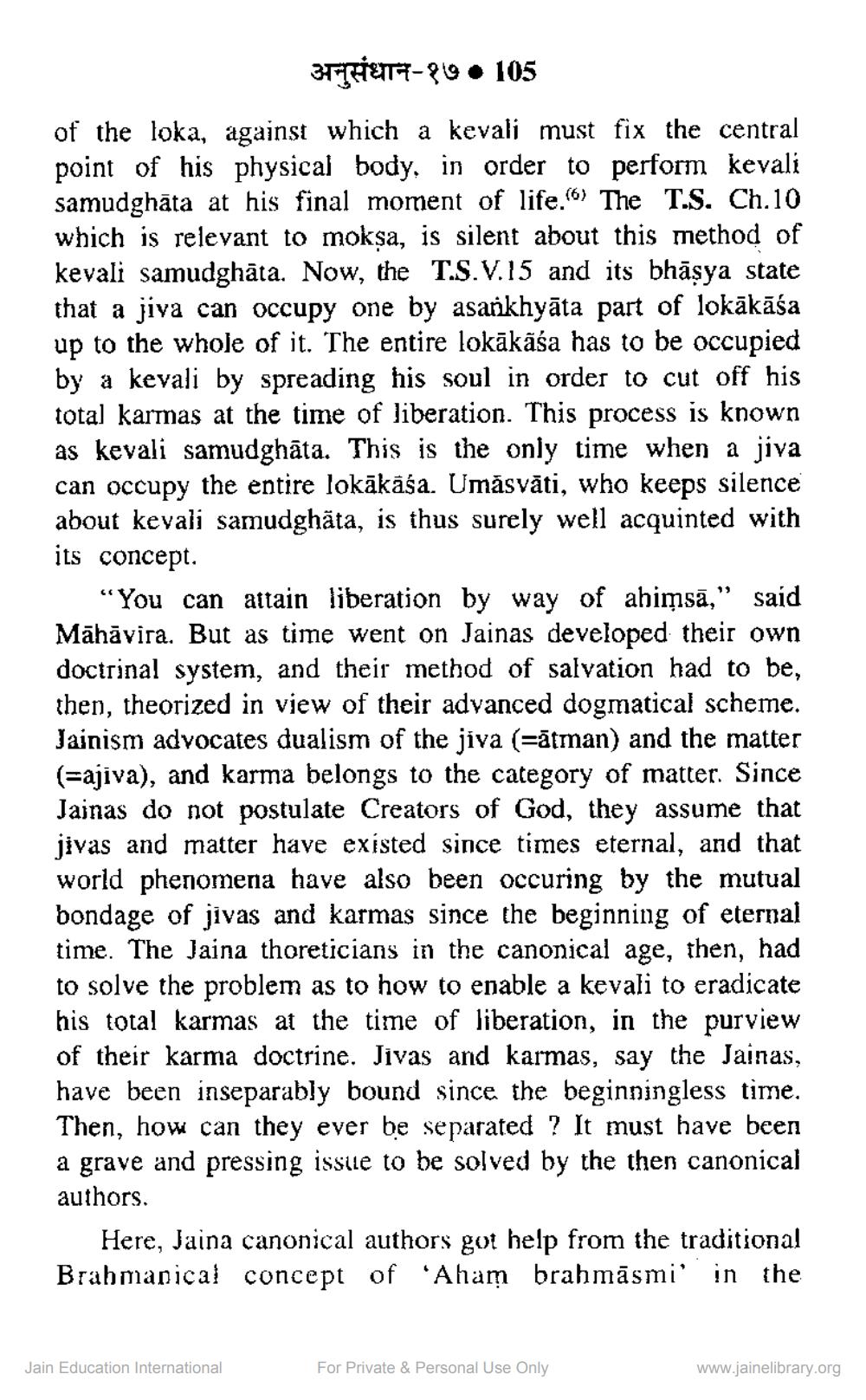________________
STIFTETT-99.105 of the loka, against which a kevali must fix the central point of his physical body, in order to perform kevali samudghāta at his final moment of life. The T.S. Ch.10 which is relevant to mokşa, is silent about this method of kevali samudghāta. Now, the T.S.V.15 and its bhāşya state that a jiva can occupy one by asarikhyāta part of lokākāśa up to the whole of it. The entire lokākāśa has to be occupied by a kevali by spreading his soul in order to cut off his total karmas at the time of liberation. This process is known as kevali samudghāta. This is the only time when a jiva can occupy the entire lokākāśa. Umásvāti, who keeps silence about kevali samudghäta, is thus surely well acquinted with its concept.
“You can attain liberation by way of ahimsā," said Māhāvira. But as time went on Jainas developed their own doctrinal system, and their method of salvation had to be, then, theorized in view of their advanced dogmatical scheme. Jainism advocates dualism of the jiva (=ātman) and the matter (=ajiva), and karma belongs to the category of matter. Since Jainas do not postulate Creators of God, they assume that jivas and matter have existed since times eternal, and that world phenomena have also been occuring by the mutual bondage of jivas and karmas since the beginning of eternal time. The Jaina thoreticians in the canonical age, then, had to solve the problem as to how to enable a kevali to eradicate his total karmas at the time of liberation, in the purview of their karma doctrine. Jivas and karmas, say the Jainas, have been inseparably bound since the beginningless time. Then, how can they ever be separated ? It must have been a grave and pressing issue to be solved by the then canonical authors.
Here, Jaina canonical authors got help from the traditional Brahmapical concept of 'Aham brahmāsmi' in the
Jain Education International
For Private & Personal Use Only
www.jainelibrary.org




